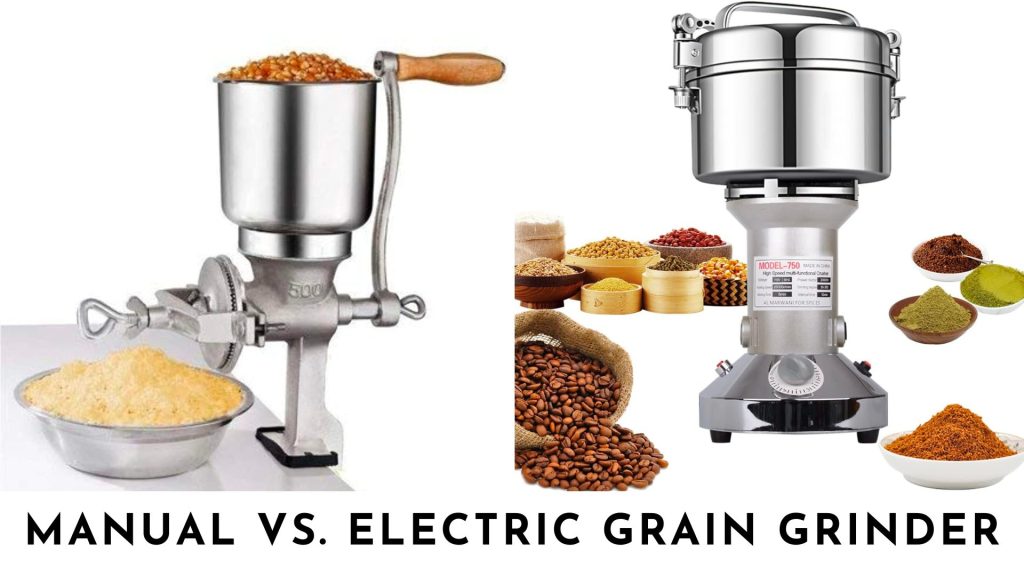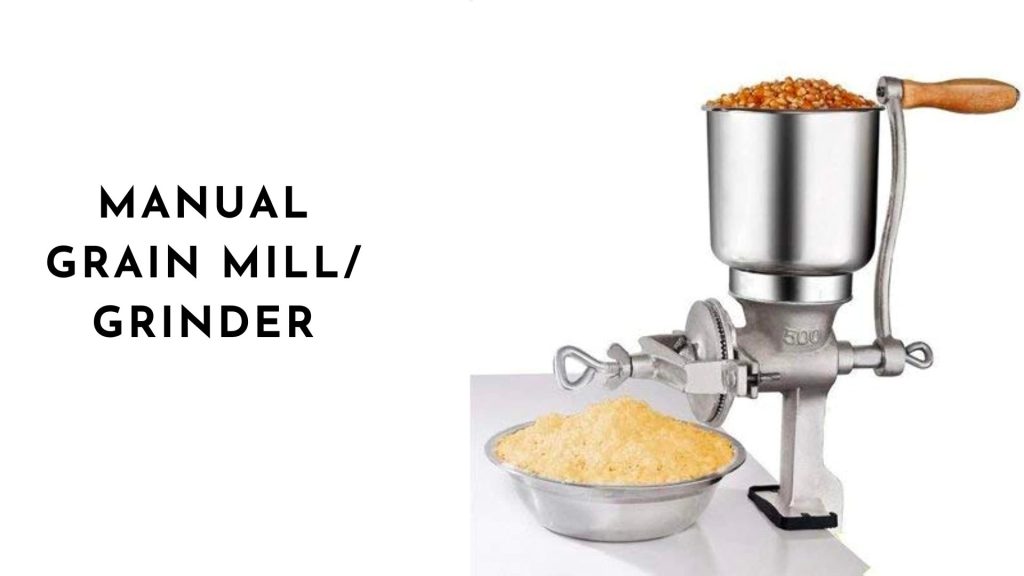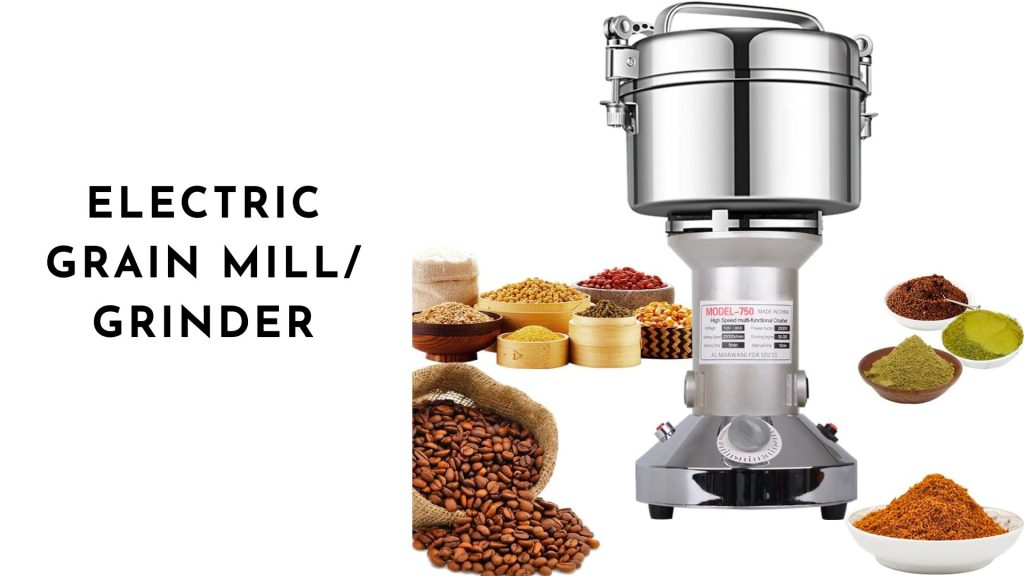Grinding your own grains at home is a time-honored tradition that yields fresh, flavorful fldddours and meals for baking and cooking. When it comes to grain grinders, you have two primary options: manual and electric. In this comprehensive comparison article, we’ll explore the pros and cons of each type of grain grinder to help you decide which one suits your needs and preferences.

Comparison: Manual vs. Electric Grain Grinder
Let’s dive into details of each equipment, the advantages and disadvantages of it.
1. The Manual Grain Mill/Grinder

Operation: Manual grain grinders require physical effort to turn a handle or crank, which rotates the grinding mechanism. For this tool, you as the users have control over the speed and consistency of the grind.
Pros:
- Portability: Manual grinders are typically compact and portable, making them great for outdoor use or when you’re off the grid.
- Control: Users can adjust grind size on the fly, which is essential for different recipes.
- Durability: These grinders often have fewer parts, reducing the risk of mechanical failure.
Cons:
- Labor-Intensive: Manual grinding can be physically demanding, especially for larger quantities of grain.
- Slower: It takes more time to grind a significant amount of grain compared to electric models.
- Inconsistent: Achieving a consistent grind size can be challenging, particularly for beginners.
2. The Electric Grain Grinder

Operation: Electric grain grinders are powered by electricity and use a motor to turn the grinding burrs or blades. They are typically more automated and require less physical effort.
Pros:
- Speed and Efficiency: Electric grinders can process larger quantities of grains quickly and efficiently.
- Consistency: They often produce a more consistent grind size, crucial for baking and precision cooking.
- Convenience: Electric models are easier to use, making them suitable for daily or heavy use.
Cons:
- Price: Electric grain grinders tend to be more expensive than their manual counterparts.
- Limited Portability: These models rely on a power source, making them less versatile for outdoor use.
- Mechanical Complexity: More parts and electronic components may lead to potential maintenance and repair issues.
Choosing the Right Grinder
In order for you to choose the right grain mill or grinder that fit best for yourself, we suggest that you consider our following assessment of each equipment:
- Grain Quantity: Consider your typical grain grinding volume. If you frequently grind large quantities, an electric grinder might be more practical. Manual grinders are suitable for smaller batches.
- Budget: Evaluate your budget as electric grain grinders tend to be more expensive. Determine your investment based on your usage and long-term needs.
- Consistency: If you require a consistent grind size for baking or specific recipes, an electric grinder is the better choice.
- Portability: For outdoor enthusiasts or those with limited access to electricity, a manual grinder’s portability can be a significant advantage.
- Maintenance: Assess your willingness and ability to perform maintenance and repairs. Manual grinders are often simpler in design, making them easier to learn how to use and maintain.
Conclusion
The choice between a manual and electric grain grinder ultimately depends on your specific needs, lifestyle, and preferences. Manual grinders offer control, portability, and durability, but they require physical effort and may yield less consistent results. Electric grinders excel in speed, efficiency, and consistency but come at a higher cost and may require more maintenance. Understanding your priorities and intended usage will guide you in selecting the ideal grain grinder for your home.